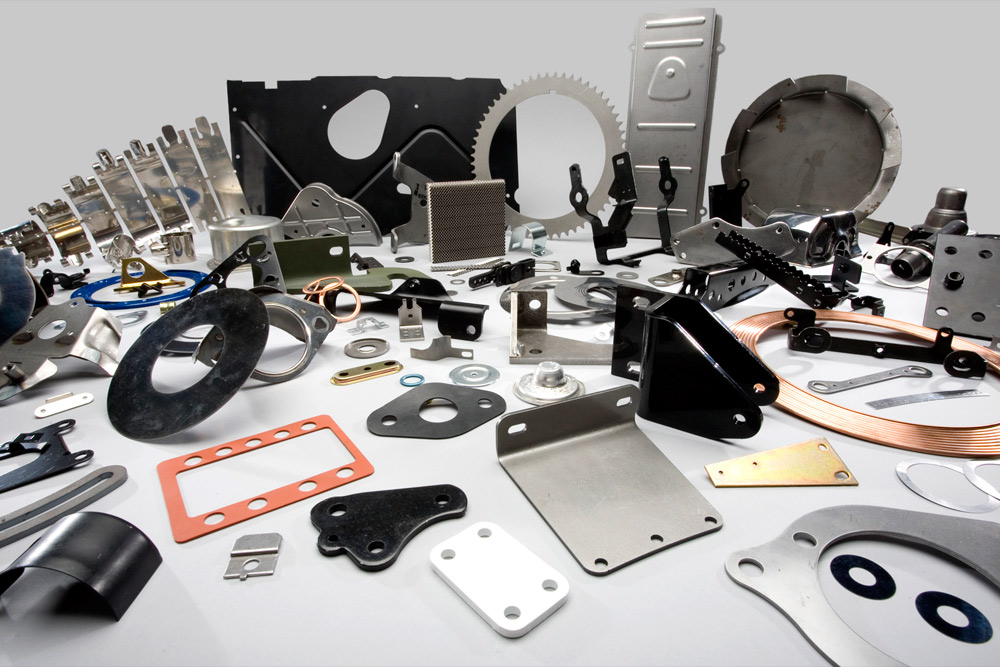Experience the Conveniences of Metal Stamping in Industrial Production
Experience the Conveniences of Metal Stamping in Industrial Production
Blog Article
Steel Stamping Technologies: Elevating Production Processes for Superior Results
In the realm of producing procedures, steel marking has long been a keystone strategy for producing an array of accuracy components. With the relentless march of technical development, the landscape of steel stamping is undergoing a significant change.
Development of Steel Stamping Methods

In addition, innovations in product scientific research have led to the advancement of high-strength alloys that can currently be flawlessly stamped into complex forms, accommodating a wider variety of commercial applications. The integration of robotics and fabricated intelligence has further enhanced the marking procedure by improving speed and precision while minimizing the threat of human mistake.

Effect of Advanced Materials
Have advanced materials transformed metal marking procedures dramatically in the production sector? By making use of materials such as high-strength alloys, progressed compounds, and innovative finishes, steel marking procedures can currently produce parts that are lighter, more powerful, and a lot more sturdy than ever previously.
These sophisticated products provide superior mechanical residential properties, rust resistance, and thermal stability, enabling producers to satisfy the needs of modern-day industries such as aerospace, automotive, and electronics. Furthermore, making use of innovative products in steel marking has assisted in the manufacturing of complex geometries and complex designs that were formerly unattainable through traditional methods.
Furthermore, the execution of sophisticated products has resulted in minimized material waste, reduced production expenses, and shorter lead times, making steel marking processes more cost-effective and lasting. As modern technology continues to breakthrough, the impact of innovative materials on steel marking processes is expected to drive additional technology and boost the competition of manufacturers in the worldwide market.
Automation in Metal Stamping
The advancement of metal stamping processes driven by the assimilation of sophisticated materials has actually set the stage for considerable developments in automation within the production industry. Automation in steel marking has actually revolutionized manufacturing procedures, enhancing performance, accuracy, and overall outcome quality. With the utilization of robotics, sensing units, and computer-controlled systems, tasks that were taxing and once manual can currently be executed with unrivaled speed and precision.
Automation in steel marking not only increases manufacturing rates however likewise ensures uniformity in the manufacturing process. By decreasing human intervention, the danger of errors is considerably decreased, bring about higher degrees of product harmony and reliability. Furthermore, automation enables makers to carry out intricate marking tasks that would certainly be not practical or challenging to achieve by hand.
Additionally, automation in steel stamping adds to a much safer working setting by decreasing the demand for workers to take part in repetitive or hazardous jobs - Metal Stamping. This change towards automation not only improves efficiency however additionally leads the way for the future of manufacturing, where modern technology plays a main role in driving operational excellence
Quality Assurance and Inspection Solutions
With a focus on accuracy and integrity, quality assurance and examination systems play a vital function in making sure product quality in metal stamping procedures. These systems are created to keep track of every stage of production, from product examination to the last item, to Homepage ensure that all parts fulfill the required requirements. By executing sophisticated technologies such as optical examination systems, coordinate gauging machines (CMM), and automated evaluating devices, suppliers can discover even the tiniest deviations in dimensions, surface top quality, and total integrity of stamped components.

Sustainability Practices in Metal Stamping
Structure upon the foundation of accuracy and reliability established via quality assurance and inspection systems, the assimilation of sustainable techniques in metal stamping procedures is increasingly coming to be a centerpiece for suppliers seeking to minimize environmental influence and enhance source use. Sustainability methods in metal marking encompass a series of campaigns targeted at lowering waste generation, power usage, and greenhouse gas emissions throughout the production process.
One key aspect of sustainability in steel marking is the adoption of green products and modern technologies that promote recyclability and waste decrease. By utilizing recycled products and implementing energy-efficient equipment, suppliers can reduce their carbon footprint and add to a much more lasting manufacturing cycle. Additionally, optimizing manufacturing processes to reduce product waste and power usage not only benefits the setting however additionally results in set you back savings for businesses in the future.
Moreover, the application of lasting practices in steel marking can enhance brand name reputation and appeal to eco mindful customers. As sustainability proceeds to obtain importance in the manufacturing sector, integrating eco-friendly efforts right into metal stamping processes is vital for long-term success and competition on the market.
Verdict
Finally, steel stamping methods have considerably evolved gradually, incorporating innovative products and automation to improve making procedures. Quality control and evaluation systems play a critical duty in making certain premium outcomes, Discover More while sustainability methods are progressively being applied to decrease ecological effect. These innovations in this steel stamping have actually revolutionized the market, bring about extra effective and sustainable production methods for various industries.
Steel marking, once a manual and labor-intensive procedure, has actually transformed into a highly automated and innovative method of forming metal sheets into various types and designs.Have advanced products transformed steel stamping processes dramatically in the manufacturing sector? By utilizing products such as high-strength alloys, progressed compounds, and ingenious layers, steel marking processes can now generate elements that are lighter, more powerful, and more long lasting than ever in the past.
The development of metal marking processes driven by the integration of sophisticated materials has established the stage for considerable developments in automation within the production industry.In final thought, steel stamping methods have actually significantly progressed over time, integrating advanced materials and automation to enhance manufacturing procedures.
Report this page